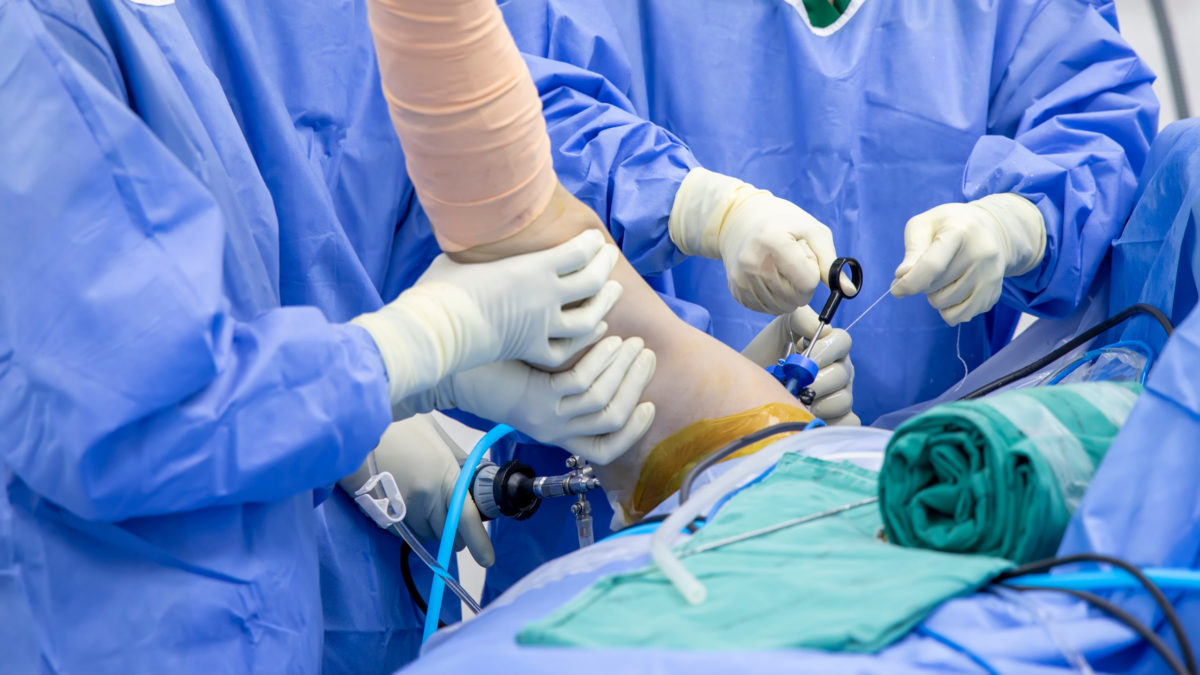Shoulder injuries can be painful, restrict your range of motion, and prevent you from enjoying an active lifestyle. When shoulder injuries are severe or have not responded to conservative treatment methods, shoulder arthroscopy may be suggested.
This minimally-invasive shoulder procedure is used to treat several shoulder injuries and produces favorable outcomes. According to a study, 90% of arthroscopic rotator cuff surgery recipients reported positive outcomes following surgery.
The fellowship-trained arthroscopic shoulder surgeons at EmergeOrtho are dedicated to providing advanced, world-class, and patient-centered orthopedic care.
What Types of Conditions Can Arthroscopic Shoulder Repair Address?
The shoulder joint is more flexible and has a greater range of motion than any other joint in the body. Shoulder injuries can prevent you from participating in your favorite sports and activities, and if left untreated can even keep you from performing simple tasks without pain and discomfort.
While EmergeOrtho shoulder specialists attempt to treat orthopedic conditions conservatively, some injuries and conditions require surgical intervention for proper recovery. When non-operative measures such as medication, rest, ice, elevation, compression, and activity modification fail to address a shoulder problem, arthroscopic shoulder repair may be recommended.
Arthroscopic shoulder repair often successfully addresses:

- Rotator Cuff Tears and Injuries: Injury and degeneration are the primary causes of a rotator cuff tear or injury. If symptoms persist longer than six months to a year, surgical intervention may be necessary.
- Torn Cartilage: When the shoulder cartilage tears, it is also referred to as a labral tear. Often a result of the aging process or injury, a labral tear may require surgery to fully heal.
- Loose Tendons: Loose tendons, or “shoulder instability,” are the result of the arm bone popping out of the shoulder joint. Generally, shoulder instability happens from an injury, fall, or blow to the shoulder.
- Torn Tendons: Torn tendons in the shoulder are often a byproduct of fraying tendons. The common biceps tendon tear generally results from heavy lifting, overuse, and injury.
- Bone Spurs: Commonly associated with osteoarthritis, bone spurs are bony protrusions that develop along bone edges. Although there may be no initial symptoms, bone spurs can inhibit healthy range of motion in the shoulder joint.
How Is Arthroscopic Shoulder Surgery Performed?
Arthroscopic surgery utilizes a high-tech camera called an arthroscope. Your orthopedic surgeon uses a small incision to insert the arthroscope into the shoulder joint. The arthroscope contains a fiberoptic light source alongside the small camera to allow the surgeon to view the joint on a monitor. The procedure is usually performed in an outpatient setting and is less invasive than traditional shoulder surgery.
There are several advantages to arthroscopic surgery. Not only does it involve a much smaller incision, but patients who have had arthroscopic surgery also may recover more quickly than those who have undergone “traditional” shoulder surgery.
What to Expect After Shoulder Surgery
It’s important for patients to understand the process and timeline of arthroscopic shoulder surgery recovery before undergoing the procedure.
Following surgery, physical therapy will be needed to regain healthy function of the shoulder. Although healing time from shoulder arthroscopy varies, many patients recover within three to six months.
Additional Shoulder Surgery and Treatment Techniques
In addition to arthroscopic shoulder repair, our EmergeOrtho shoulder experts offer:
- Distal clavicle excision
- Removal of loose pieces of cartilage or bone
- Resection of the distal clavicle
No matter the type of shoulder injury you’ve suffered, EmergeOrtho has one of the most experienced, skilled, and caring orthopedic treatment teams in North Carolina. Our practice remains informed of the latest techniques and innovations to improve outcomes for patients, including minimally invasive total joint replacement and reconstruction.
To learn more about shoulder arthroscopy, request a consultation now.




